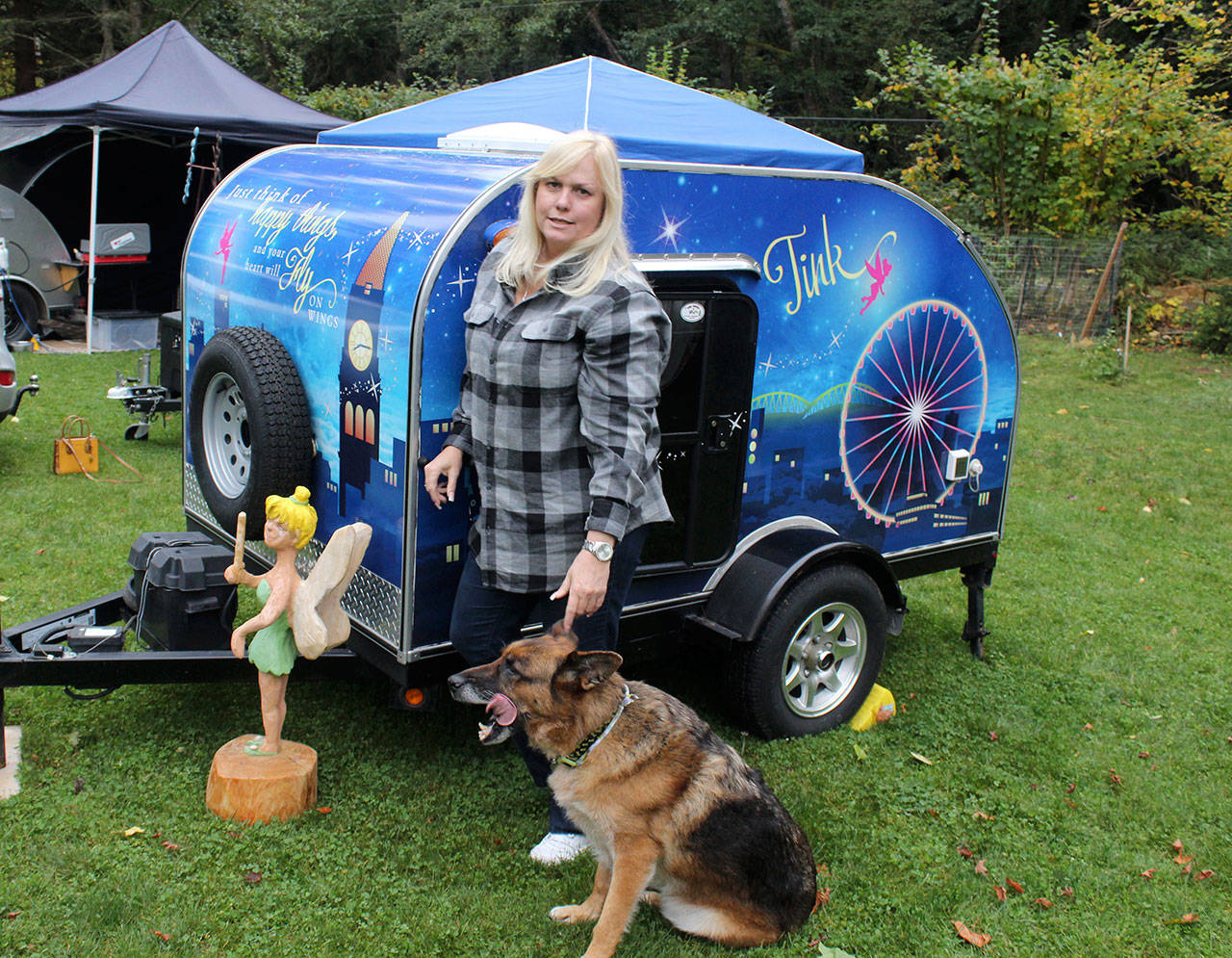Rain pounded the Tear Jerkers but didn’t drown their “Last Bash” plans to visit John Norris’ sprawling property on South Whidbey.
They cooked, they ate, they drank, they chatted, they drank some more, carried on as usual before folding themselves into thimble-size bedrooms.
They are trailer people and proud of it.
“I love it, the simplicity, the compactness and the people I meet camping,” said Jim Johnson of Ellensburg of his teardrop trailer and lifestyle.
Sitting under a tarp extending out from his tiny blue home, Johnson sipped coffee with others who converged in his rustic living room furnished with lawn chairs.
Meet the members of the Northwest chapter of Tear Jerkers, an international organization celebrating the tiny traveling contraptions and the people who pull them.
The club motto: “Life moves a little slower on teardrop time.”
They plan trips together, share meals and camaraderie at campgrounds or just strike up a conversation when they spot one of their own kind on the road.
“We’re outside people,” said Ed Showacy of Puyallup. “At campgrounds when it rains, we’re still outside while all the RVers are inside their huge campers.”
Teardrop trailers are streamlined, compact, lightweight travel trailers which get the name from their teardrop profile. They’re very light, usually less than 1,000 pounds, so just about any vehicle can tow one.
What’s the best tow vehicle for a teardrop — a Subaru Outback or Ford Ranger pick-up — fuels many tear jerking conversations late into the night.
For the last organized outing of the year of the Northwest chapter that includes British Columbia, they were hosted by John Norris and Tracy Cunningham on the last weekend of October.
Norris fixes up and restores campers on his expansive swath of property. The ones he restores to a second life are generally old beat-up small campers that have seen better days.
“I’ve sold 300 vintage trailers,” Norris said.
Color, style, size, painted exterior scenes and wraparound art distinguished the round up of teardrops and small campers parked at Norris’ temporary trailer park.
“Tink” is the nickname of Cunningham’s royal blue teardrop wrapped in a Wonderland theme. A statute of the Disney character Tinkerbell stood out front.
“The skyline is Seattle,” she pointed out. “Here’s the Space Needle, Pike’s Place Market, the Great Wheel and on the back is Mount Rainier.”
A pink Tinkerbell flits across the snow-capped peak and blue sky with the words, “Second star to the right and straight on ‘til morning.”
Among the teardrops, one small camper trailer of the regular variety stood out with its shape, size and prairie scene painted on its exterior.
“That’s called a standee,” said Ted Hoefer of Camano Island. “Because you can stand up in it.”
Teardrop trailers evolved in the 1930s and became popular in the 1940s after World War II when a surplus of aircraft aluminum suddenly became available, Hoefer explained.
First introduced as a “honeymoon house trailer,” the teardrop is designed with a raise-up lid in back that usually contains a small kitchenette. Its interior is generally all bed, room for two humans, sort of, or a dog or two.
“I’ve dreamed about owning one of these for years,” enthused Jimmy Smith who drove from Idaho. “I just picked it up last spring.”
Like many small trailer travelers, Smith’s figuring out that tight quarters mean minimal possessions and learning to live like a sailor at sea. Not much stuff, much contentment.
“I want to get to the point that if I don’t have it then I don’t need it,” said Smith.
Brian and Sandi Woods are the Canadians of the club who got the Northwest chapter jump-started a few years ago. Their trip to Whidbey Island from British Columbia marked their 52nd road trip of 2018, a 70,000-mile year.
Wherever they go, double-takes follow.
Their one-of-a-kind trailer resembles a vintage car, smooth and sleek and creamy white with a Studebaker front that sticks out like an airplane nose.
“I pieced it together it from 11 cars, four trucks and two motorcycles,” Brian Woods said. “When I was building it, I thought, ‘it looks like a pig.’ So I went inside and asked my wife and she said, ‘it looks like a pig.’”


